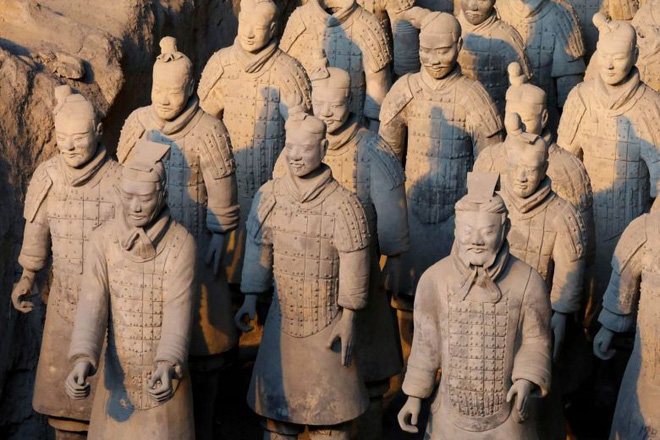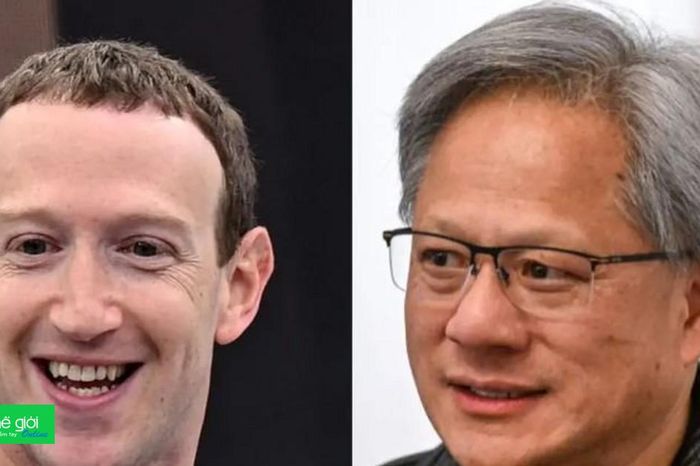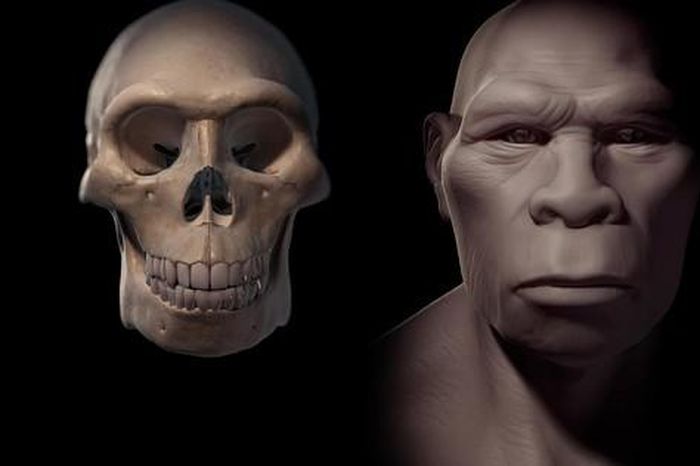Find out why weapons Terracotta army of Qin Shi Huang still shiny and sharp after more than 2000 years
Scientists solve the mystery of China's terracotta weapons
For decades, scientists have been unable to explain why the weapons of the terracotta army in the tomb of Qin Shi Huang are so perfectly preserved, their surfaces are still shiny. and sharp after being buried for more than two millennia.

Terracotta warriors and horses stand inside pit # 1 of the Terracotta Warriors and Horses Museum in Xi'an, Shaanxi Province, China
The research by an international team of scientists published Thursday could solve the mystery and put an end to an intriguing hypothesis that has lasted for four decades: that ancient Chinese artisans Dai used an unexpectedly advanced method of preservation, using chromium metal.
After studying 464 brass weapons and accessories, the scientists concluded that almost perfectly preserved weapons, including mirrors, spears, and spears, were accidental - a combination of favorable soil composition in the catacombs and high tin content in copper metal.
Scientists claim that chromium was found on the surface of copper weapons coming from the chrome-rich lacquer that was smeared by artisans on terracotta statues and weapon parts. They have no intention of using chromium for preservation purposes.
The terracotta army is composed of thousands of life-sized earthen warriors, horses and chariots and bronze weapons that were part of the tomb of Qin Shi Huang - the first emperor of China to unify. , located near Xi'an city. The tomb complex was discovered in 1974 and it represents one of the greatest archaeological discoveries of the 20th century.
Scientific analysis nearly four decades ago uncovered chromium on the surface of some weapons, suggesting that the ancients used chrome-based treatments to prevent corrosion.
Chrome coating, a technology discovered in the early 20th century, was used to process metals to prevent them from corroding. The metal will be dipped in a solution containing chromium salt. A layer of chromium oxide is deposited on the metal surface, creating an anti-rust barrier.
Marcos Martinón-Torres, an archaeologist at the University of Cambridge and the head of research published in Scientific Reports, said: "The lacquer is applied to the terracotta army as a primer before they are painted in different colors and we think it is also applied to decayed wooden parts such as handles and shafts. "
Ancient bronze coins were often in poorly preserved state, with porous, porous surfaces in green or dark colors.
"In essence, we show that the terracotta army's weapons show the state of protection," said Martinón-Torres, a researcher at the University College London in collaboration with the Qin Shi Huang Tomb Museum. well managed, but currently there is no indication that this is anything but a result of accidental "
You should read it
- What is Data Scientist? How to become Data Scientist?
- 4 timeless inventions of the ancient people
- Mysterious trap system and full of danger in the tomb more than 2000 years of Qin Shihuang
- Series of mysterious stone statues made scientists theorize: Did humans live at the same time as dinosaurs?
- Treasures of death: A series of remains covered with jewels in the tomb
- Free download Tomb Raider and Lara Croft and The Temple of
- Greek tomb with pottery pots discovered in Alexandria
- 11 mysterious ancient buildings in the world that challenge the scientific world
May be interested
- Revealing secrets hidden by the CIA for decades
 there are many secret programs of varying degrees that the government and the us military have been trying to keep secret for years like the world war ii supersonic flying saucer, cat scouts, and particle bombs. human ...
there are many secret programs of varying degrees that the government and the us military have been trying to keep secret for years like the world war ii supersonic flying saucer, cat scouts, and particle bombs. human ... - This is the first weapon of attack of the US Space Force
 it is on the list of 48 weapons that will be published in the next 7 years, with the purpose of temporarily interfering with russian or chinese communication satellite signals.
it is on the list of 48 weapons that will be published in the next 7 years, with the purpose of temporarily interfering with russian or chinese communication satellite signals. - Discover the mystery of dangerous chemical weapons in ancient war
 historically, ancient wars have relied heavily on manpower and tactics. but during that period, people also knew based on the things in nature to create some dangerous weapons. they are used as biological weapons causing terrible consequences for humans.
historically, ancient wars have relied heavily on manpower and tactics. but during that period, people also knew based on the things in nature to create some dangerous weapons. they are used as biological weapons causing terrible consequences for humans. - How Mark Zuckerberg, Jensen Huang, Sam Altman and CEOs of major technology companies use AI
 since openai launched chatgpt in november 2023, many people have used this artificial intelligence (ai) chatbot in their personal and professional lives, including leaders of some of the world's most influential businesses. .
since openai launched chatgpt in november 2023, many people have used this artificial intelligence (ai) chatbot in their personal and professional lives, including leaders of some of the world's most influential businesses. . - Discovering another human 'weapons factory' in a quarry in Israel
 hidden in a quarry in the upper galilee region of israel is an entire 'weapons factory' that existed 1.6 million years before our species homo sapiens was born.
hidden in a quarry in the upper galilee region of israel is an entire 'weapons factory' that existed 1.6 million years before our species homo sapiens was born. - Marvel at the destructive weapons produced by Samsung that you never knew
 samsung - south korea's largest conglomerate not only produces consumer electronics devices, but also has a strong reputation in the production of weapons and military hardware that surprised many people.
samsung - south korea's largest conglomerate not only produces consumer electronics devices, but also has a strong reputation in the production of weapons and military hardware that surprised many people. - Which AI are Mark Zuckerberg and Jensen Huang using and for what purpose?
 famous technology leaders such as mark zuckerberg, jensen huang... are all taking advantage of the power of ai to increase work efficiency.
famous technology leaders such as mark zuckerberg, jensen huang... are all taking advantage of the power of ai to increase work efficiency. - Why was the tomb of Qin Shihuang discovered but still a mystery?
 the tomb of qin shihuang, the first emperor in chinese history, is one of the greatest archaeological finds of all time. but although it has been discovered for a long time, the tomb of qin shihuang still avoids all the nuisance intervention of the posterity.
the tomb of qin shihuang, the first emperor in chinese history, is one of the greatest archaeological finds of all time. but although it has been discovered for a long time, the tomb of qin shihuang still avoids all the nuisance intervention of the posterity. - How to choose when to throw weapons in PUBG
 in addition to the guns, the pubg throwing weapons are also capable of attacking and destroying opponents.
in addition to the guns, the pubg throwing weapons are also capable of attacking and destroying opponents. - Asus and Sharp's Retina screen challenge
 while asus said it would launch a 15.6-inch 4k-resolution laptop, sharp also introduced an 8k screen prototype. they are considered real competitors for apple's retina display.
while asus said it would launch a 15.6-inch 4k-resolution laptop, sharp also introduced an 8k screen prototype. they are considered real competitors for apple's retina display.










 Incredible experience: Apollo astronaut almost died trying to jump high on the Moon
Incredible experience: Apollo astronaut almost died trying to jump high on the Moon The story of Thomas Jennings, the first black person to hold a patent, make money from his invention to free his family from slavery.
The story of Thomas Jennings, the first black person to hold a patent, make money from his invention to free his family from slavery. Why are Japanese mobile phone companies only able to develop in the domestic market?
Why are Japanese mobile phone companies only able to develop in the domestic market? Vast variety of cages capturing ancient Chinese crickets: The wonderful artifacts of mankind
Vast variety of cages capturing ancient Chinese crickets: The wonderful artifacts of mankind Archaeologist sculpted the face of real people thousands of years ago, 'every millimeter beautiful' made many people cheated
Archaeologist sculpted the face of real people thousands of years ago, 'every millimeter beautiful' made many people cheated Why do so many medieval Europeans sleep in box beds?
Why do so many medieval Europeans sleep in box beds?